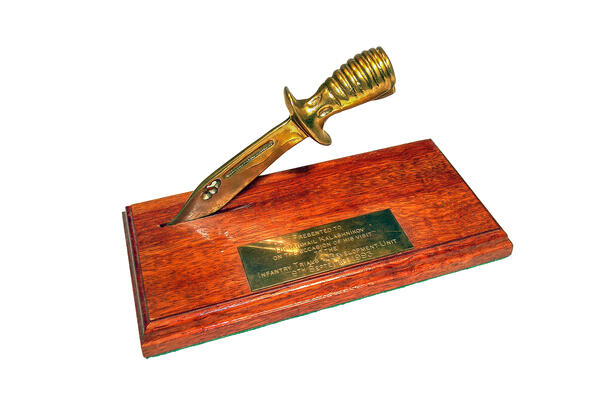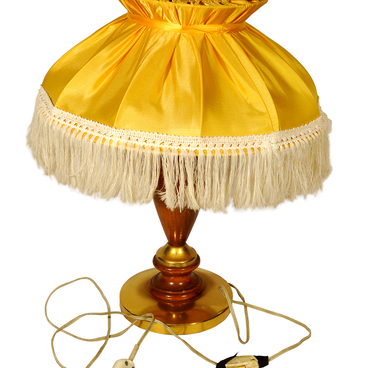Bayonets attached to firearms were first used in the 17th century in France and were inserted into the bore of a gun barrel. At first, they were not popular, since soldiers already had a sword, saber or bardiche for fencing — a feather on a long shaft. But gradually the bayonet replaced bladed polearms.
By the beginning of the First World War, the armies of Europe were armed with small-caliber magazine rifles, which greatly reduced the likelihood of bayonet combat. Bayonets became multifunctional, got a wide blade and a handle. Having detached the bayonet from the barrel, a soldier could use it as a cleaver in battle or as an entrenching tool in footing trips. By the mid-20th century, cleaver bayonets were replaced with even shorter and lighter knives.
A knife bayonet in a scabbard was included with all Kalashnikov assault rifles, except for the shortened ones. The Soviet army adopted the standard knife bayonet of the 6X2 version for the lightweight AK-47 in 1953. In the 1960s, the 6X3 combined-arms knife bayonet for AKM and SVD was accepted into service. It was developed based on a special combat knife of sea scouts. A characteristic feature of this model is the through-hole in the blade: it was connected to the ledge on the scabbard forming scissors that could cut the barbed wire. The 6X4 modification of this knife was intended for the AKM and AK-74 assault rifles, and the 6X5 knife bayonet was for the AK-74 and AN-94.
The new generation of assault rifles — AK-12, AK-101, and AK-103 — received a knife bayonet with the designation ShN-2 “Shmel” (6X9-1). This knife had a guard, a handle made of anti-slip rubber, and an asymmetric double-edged blade capable of piercing a bulletproof vest.
As a weapon designer and hunter, Mikhail Kalashnikov highly valued army knives. In 1993, in Warminster, Wiltshire, during a visit to the British Army Infantry Trials & Development Unit, Kalashnikov was presented with a souvenir knife bayonet of the British Army.
The knife bayonet L3A1 was adopted in the UK in 1985 and was used with the 5.56 mm SA-80 automatic rifle and its modifications L85A1 and L85A2. The design was developed by Alex Newman. The bayonet blade was single-edged, with a rectangular groove, and the combat end was double-edged, with a concave blade on the spine side.
The handle of the British knife bayonet was made of steel. Its thickened upper part was covered with annular grooves so that the weapon was comfortable to hold in the hand, and a spring latch with a button was mounted in the head. The handle was equipped with a bolt stop, and a bottle-opening hook was attached to it from the spine side.
By the beginning of the First World War, the armies of Europe were armed with small-caliber magazine rifles, which greatly reduced the likelihood of bayonet combat. Bayonets became multifunctional, got a wide blade and a handle. Having detached the bayonet from the barrel, a soldier could use it as a cleaver in battle or as an entrenching tool in footing trips. By the mid-20th century, cleaver bayonets were replaced with even shorter and lighter knives.
A knife bayonet in a scabbard was included with all Kalashnikov assault rifles, except for the shortened ones. The Soviet army adopted the standard knife bayonet of the 6X2 version for the lightweight AK-47 in 1953. In the 1960s, the 6X3 combined-arms knife bayonet for AKM and SVD was accepted into service. It was developed based on a special combat knife of sea scouts. A characteristic feature of this model is the through-hole in the blade: it was connected to the ledge on the scabbard forming scissors that could cut the barbed wire. The 6X4 modification of this knife was intended for the AKM and AK-74 assault rifles, and the 6X5 knife bayonet was for the AK-74 and AN-94.
The new generation of assault rifles — AK-12, AK-101, and AK-103 — received a knife bayonet with the designation ShN-2 “Shmel” (6X9-1). This knife had a guard, a handle made of anti-slip rubber, and an asymmetric double-edged blade capable of piercing a bulletproof vest.
As a weapon designer and hunter, Mikhail Kalashnikov highly valued army knives. In 1993, in Warminster, Wiltshire, during a visit to the British Army Infantry Trials & Development Unit, Kalashnikov was presented with a souvenir knife bayonet of the British Army.
The knife bayonet L3A1 was adopted in the UK in 1985 and was used with the 5.56 mm SA-80 automatic rifle and its modifications L85A1 and L85A2. The design was developed by Alex Newman. The bayonet blade was single-edged, with a rectangular groove, and the combat end was double-edged, with a concave blade on the spine side.
The handle of the British knife bayonet was made of steel. Its thickened upper part was covered with annular grooves so that the weapon was comfortable to hold in the hand, and a spring latch with a button was mounted in the head. The handle was equipped with a bolt stop, and a bottle-opening hook was attached to it from the spine side.



